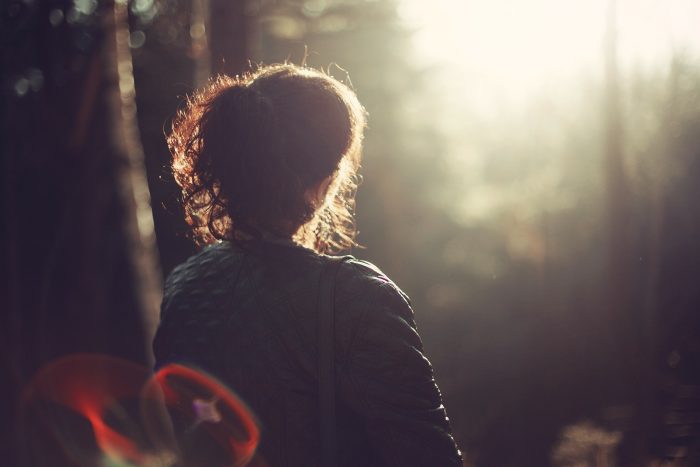Becoming mindful: connecting to your body to quiet your mind.
I discovered mindfulness and moving meditations about 12 years ago as I was searching for ways to ease my anxiety and depression. I didn’t know then what the anxiety and depression meant, why it was there, or what it was trying to tell me. All I wanted to do was get rid of it.
Traditional meditation did not work for me. I had years of practice dissociating from my body and using my mind as a refuge, which meant to quiet the mind and return to my body felt like a terrifyingly vulnerable place to be. It triggered me. During the meditation, my body protested with aches and pains, cramps, and cries of thirst or hunger. My mind tempted me with interesting ideas and scenes, beckoning to me like the Cheshire Cat, promising me pure escape.
Not to mention the emotions that came up: anger, grief, sadness. All these things came swirling up “from nowhere” and seemed too overwhelming and confusing to handle at the time. Each experience seemed more like an experiment in how much I could fail to quiet my mind and remain present, but I kept at it. I knew, deep down, there was something there for me, that I was on to something.
When I was able to summon the will to sit and enjoy the experience (usually visualizing and guided meditations), my inner critic came in and shut that down real quick by reminding me of all the reasons I am not supposed to enjoy myself and my life and making sure I remembered the evidence.
But I was not going to give this up. What I found was that combining movement or action with a specific type of meditation called “mindfulness” offered me relief from the size of the emotions as I moved them through the medium of the movement itself.
As I practiced this, I evolved it to my needs and began to add my own twist to it. Because I had learned to use my mind as an untamed wild place to escape from inhabiting my body, I began to do the opposite. I focused on the physical sensations and movements of my body even when I was doing menial or mundane tasks.
Washing the dishes was no longer a chore; it was an opportunity to observe what it felt like to move my body through time and space. It was a moment to contemplate how the water felt on my skin and how that information felt as it traveled up my arm and to my mind. Each movement or sensation became an invitation to experience the deeper connection to all things that our body remembers, the subtle movements in air currents and the gentle rhythm that nature takes on when “everything is well.”
Taking a walk with the dogs or eating a good meal was so much more than “relaxing” when I was fully present and aware of my physical self, when I put down the phone and refused any distraction. I got to know what it felt like to inhabit my body again by paying attention to the layers of feeling that exist in a single sensation. To become aware of how those sensations are layered over each other and how our minds interpret them based on perceptions makes our whole lives a mind-blowing experience and we miss it simply by not paying attention to what is literally in front of us, or below us to be exact.
Perhaps that’s the problem. The head has deemed itself ruler simply by accident of its placement above the body.
But what I have found as I consistently practiced being mindful about my experiences from the body’s perspective (through the senses) is that it became a more habitable place to actually be. The more I was able to inhabit my body, and by extension the ever-present now, the more I was able to see my thoughts as separate from my being-ness.
Being able to see my thoughts as a separate, not defining aspect of myself aided me in other meditation techniques that required a “quieting of the mind.” Mindfulness taught me to observe without judgment or attachment, which made other forms of meditation and mind work easier to grasp.
Mindfulness is more than a practice that’s done on the mat or meditation pillow. It is a state of mind, a way of being in the world, that practices observation or witnessing what is arising internally and externally without attaching to it or making it “matter,” something that needed to be reacted to, or figured out, as your ego is habituated to do.
I found that using this skill during my shadow work sessions allowed me to witness the strong, overpowering emotions with a sense of calmness because I knew that these feelings did not define me or reflect on me as a person; these feelings weren’t accurate reflections of my life in the present moment, in the now. Giving myself the space to take a step back and witness the emotions and thoughts also allowed me to “see” where my shadow was hiding in often tangled and messy aspects of my experience.
Watching the rise and fall of my emotions and letting the limiting beliefs finally be acknowledged and recognized—not as fact, but as something as simple as a thought pattern, something that could be changed when it was finally seen exactly for what it was—was the most freeing feeling I had ever experienced. No longer did I feel unworthy, simply because my shadow would try to parade its “evidence” and fear in front of my consciousness each time I tried to set a new goal or reach a new height.
Now, I can pause, take a deep breath and feel into the emotion, get to the root of the issue that is causing me to hesitate, and walk myself through the process with grace rather than fighting against myself and my thoughts.
Bringing awareness to my daily tasks and making it a priority to connect with my body has enabled me to embody the peace and love I so often craved but wasn’t able to grasp. It has allowed me to be present with the people I care for in a way that I couldn’t do before when I was more focused on my own thoughts, fears, and worries.
As much as I would like to say this has “cured” me of the anxiety and depression that brought me to mindfulness to begin with, I am no longer looking for a cure like I had been.
Instead, I seek to accept who I am, understand my shifting emotions without labeling them as “good” or “bad” or “wanted and unwanted,” and work with who I am and what I have rather than try to be someone or something I am not. I still have days or weeks where I am just down and scared, which are less devastating or debilitating than they were before—but they still happen. And that’s okay! That is the key difference in my own mindset from then and now: compassion for myself and a willingness to meet myself where I am rather than trying to fix myself because something is wrong with me.
I am accepting, day by day, that I am here for the human experience, here to feel everything. So instead of trying to run from pain or discomfort, now I sit with it, talk with it, and show it the unconditional love that I know I need.
That is a subtle difference that is easy to overlook in our pursuit to “get better” or find relief from the painful feelings we can experience. As we learn to meet our needs where we are, support ourselves through the pain and discomfort, and witness and breathe through the times we feel overwhelmed, we will be surprised by how many gifts these feelings we don’t necessarily like give us and how resilient we actually are.











Read 10 comments and reply